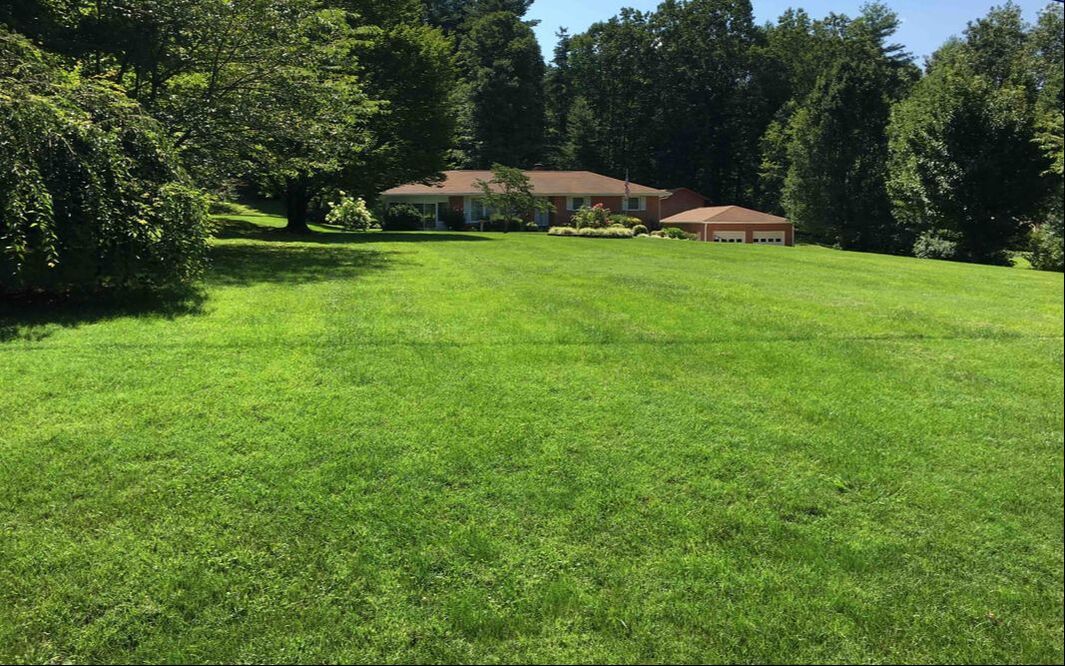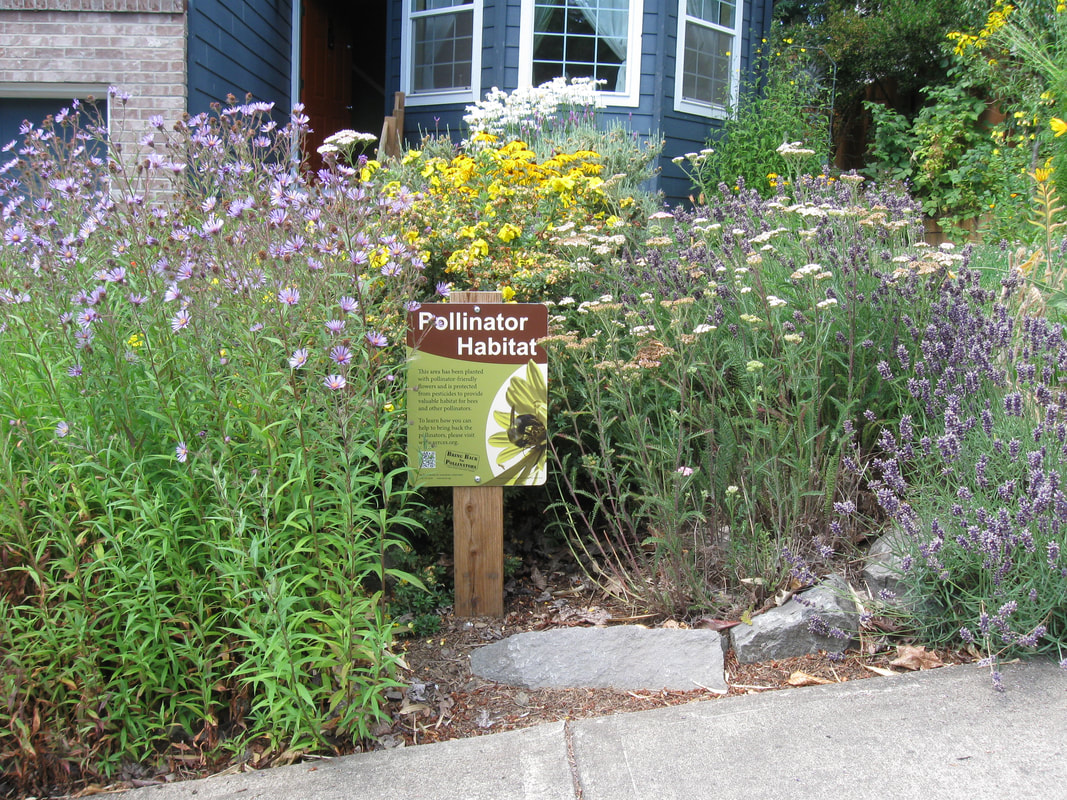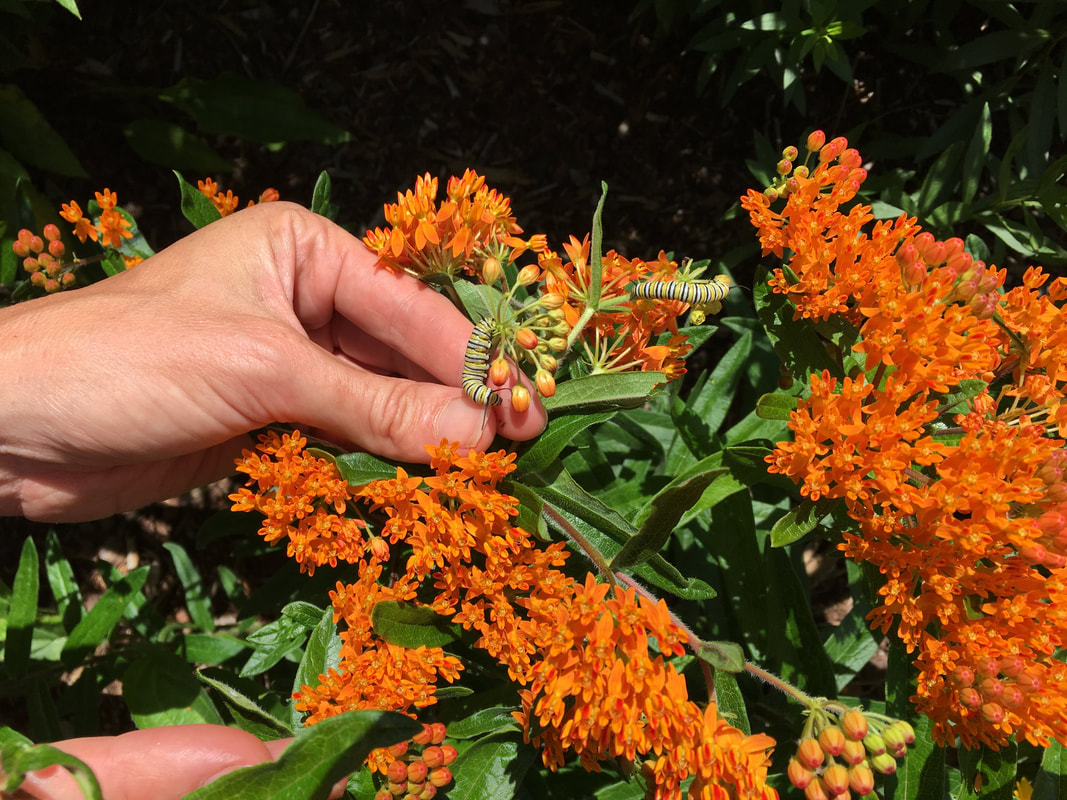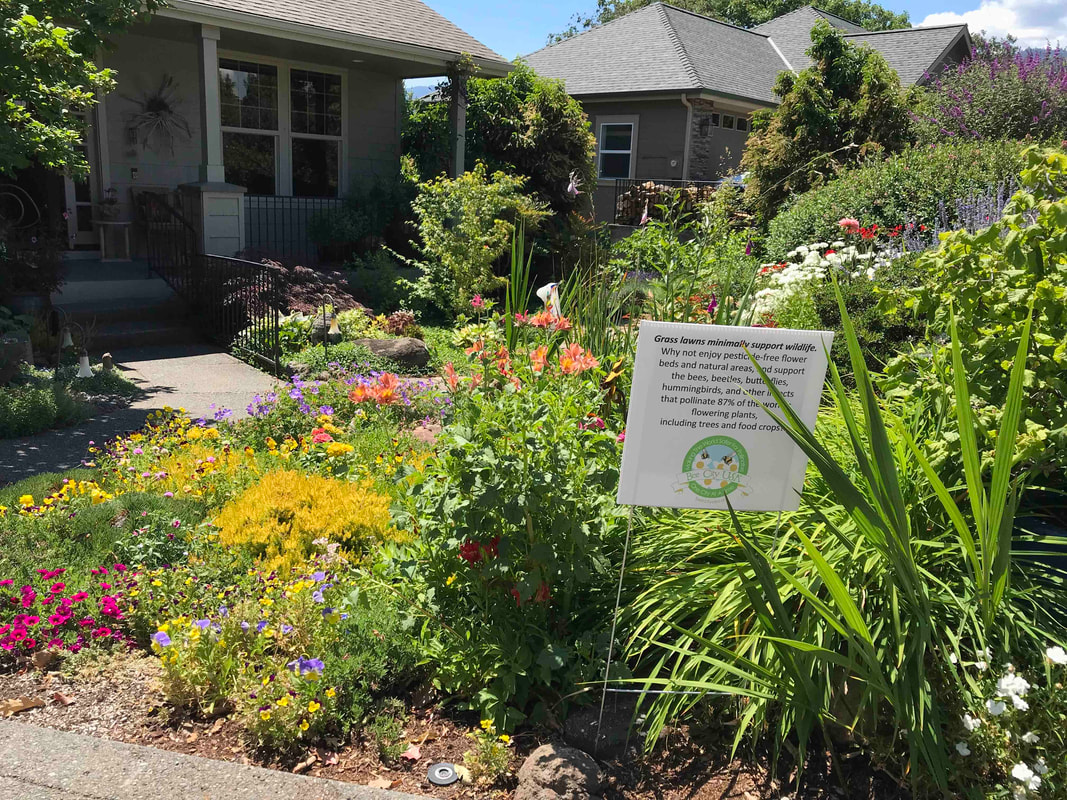
Pollinator-friendly garden programs, like Xerces’ own Bring Back the Pollinators Pledge, and the Million Pollinator Garden Challenge, are growing (no pun intended!).
As I started writing this blog, three pedestrians stopped to read my pollinator habitat sign nestled in my front yard flower bed. So I left my computer to greet them and tell them about how we need insects and pollinators to feed birds and other creatures and to help nearly 90% of flowering trees and plants reproduce. That’s why we welcome pollinators into our yard by planting a variety of locally native plants and not using pesticides. They were delighted to hear from the gardener and, in turn, shared stories about their own yard and community.
But do those kinds of exchanges really cause people to enhance more habitat for pollinators in their yards? At Bee City USA, our goal is a paradigm shift away from ornamental landscapes—dominated by lawns and exotic plants treated with synthetic fertilizers and pesticides—to untreated landscapes dominated by a diversity of locally native plants. So we are asking the age-old question—are rewards more effective than punishment in changing human behavior? The famous psychologist B.F. Skinner has written volumes on the topic of behavior modification. This blog will explore the psychology of pollinator garden certification programs for eliciting behavioral change and share information about two programs started by Bee City USA affiliates.

The conventional model of landscaping in the United States that features expansive lawns with a few exotic trees and shrubs has evolved for “ease of maintenance” and a “tidy” appearance. Sadly, turf grass and exotic trees and shrubs rarely provide food for pollinators. Most trees and shrubs in American yards were chosen because they were inexpensive and widely available, not because they support wildlife. Repetition, after all, is actually a guiding principle of landscape design. Additionally, our natural desire to blend in also caused us to mostly copy our neighbors. Ironically, that meant buying lawn mowers and devoting untold dollars and hours to lawn care most of the year. Many homeowners do so to increase the value of their homes.
Many homeowners’ associations and municipalities offer disincentives (fines) to residents who don’t keep their yards tidy enough and lawns mowed short enough; some for fire prevention and rodent control reasons; and many simply for aesthetic reasons. Some impose harsh fines for having plants that get too tall. This reflects the punishment approach to behavior modification—but according to a 2017 study, reported in the Harvard Business Review, rewards can be as effective, if not more effective, than punishment for persuading people to behave in a desired fashion. So, what would it take to get Americans to break with convention and, as Bringing Nature Home author and Bee City USA science advisor Doug Tallamy says, “Garden as if life depended on it”?
What Would Motivate Landscapers to Change Behavior?
There will always be both early adopters and reluctant adopters of any new behavior. (I’m old enough to remember all of the grumbling when safety belts were first introduced to cars. Some people didn’t use them until they were threatened with fines (i.e. punishment). As for landscaping, some people simply have no interest in landscaping of any kind, conventional or otherwise. Those people may either let nature take its course (which actually could support pollinators) while others might hire landscaping crews to manage their landscapes. Landscape designers and maintenance businesses are beginning to recognize the role landscaping can play in conservation, and also that it could provide them a competitive edge in their industry (a “reward”). As for individuals, the reward could be beautification, or cutting the costs and time associated with lawn care. If they understand the vital role pollinators play in sustaining our planet and human diet, the reward could be helping to sustain pollinators. Having a better yield (pollinators often enhance the quality and quantity of vegetable production) could be the reward for vegetable gardeners, or providing baby bird food (caterpillars) could be the reward for birders. The bottom line is that until a person understands the potential benefits, they have no reason to landscape for pollinators.

Individuals, organizations, agencies, and businesses can enhance habitat for pollinators and hopefully feel an intrinsic reward of having done something that makes people and the planet healthier. But does the old question of whether there was a sound if no one heard the tree fall in the woods apply here? Indeed, many people respond to external validation, and if their good deed is not publicly recognized with a sign or otherwise, there is no extrinsic reward. Each time they see the sign marking the pollinator habitat, they, as well as other viewers, are reminded that this landscape is different because somebody went to the trouble to make it pollinator-friendly. You may want to think of it as an ongoing, visual pat-on-the-back. Seeing your garden included in an online map or in a local list is also a sort of public reward.
Ensuring Reward Is Merited
If the saying “When you expect more, you get more” is true, expecting more is definitely the way to go! It’s a rare person who goes above and beyond expected standards, but if they are asked to do so, most people are usually willing if given a good reason and good incentive. If someone gardens as usual with mostly exotic plants and routinely using pesticides and still gets recognized for their pollinator habitat, the recognition has not caused a change in behavior. Even worse, recognizing a garden that does not actually support pollinators sends the wrong message to the entire community.
Want to Start a Local Pollinator Habitat Certification Program?
A local pollinator garden or habitat certification program is a good way to generate interest in gardening for pollinators, establishing qualifying standards, and rewarding the people or organizations who achieve them.
A wide diversity of existing certification programs offer a spectrum of program design possibilities. Some are very explicit like the Penn State University’s Master Gardeners Pollinator Garden Certification Program and require a modest application fee and site visits prior to certification, while others, like Xerces’ program, use the honor system and require applicants to accept four commitments: grow pollinator-friendly flowers, provide nest sites, avoid pesticides, and spread the word. The former takes more administration on the part of the certifying group, while the latter reaches a larger audience (it is designed to be implemented in a variety of landscapes, from community gardens, to suburban backyards, to farmland) and offers a map of certified habitat locations and a wealth of resources for enhancing pollinator habitat online. Some organizations provide signage, while others make signage available for purchase or as a thank-you gift for a donation. Another option is to provide artwork for certified gardeners to use, so that they can produce their own signs.

- Two milkweed species (minimum 2 plants each) for monarchs and five host plants for five additional butterfly species (Note: Host plants may also be counted as nectar plants.);
- Four nectar sources for butterflies and other pollinators in each of three seasons: spring, summer, and fall. (Note: Plants that bloom in more than one season can be counted in all seasons during which they provide nectar.);
- An appropriate water source for butterflies, a basking site, and shelter from weather, predators, and human activity; and
- Spaces/places for native bees to raise young.
Some of Talent’s garden stewards, Terri, Vicki and Bill. Photo: Bee City USA-Talent,OR
About Pollinator Garden Signs
Garden signs may offer some education, or even have a QR code, and refer the viewer back to a website (as Xerces’ sign does); they may have the logo of the certifying group; or they may simply have a picture of a pollinator. The pollinator may even be painted by a child. Some say the latter is ideal since it engages children in pollinator conservation. However, there is power in being part of something larger. Seeing the same sign in location after location is a repetitive invitation to join the movement and create pollinator habitat corridors in the process. Such signs also refer the viewer to a resource for more information.
Pollinator Garden Tours
Just ten certified pollinator gardens may provide enough destinations to host a pollinator garden tour. An avid gardener, my husband has even allowed our Asheville, North Carolina, garden to be included in Asheville GreenWorks’ pollinator garden tour. As though I needed to be reminded of the need for a paradigm shift when I was helping plan that garden tour, it was difficult to find many native plants in most yards in my own neighborhood, much less milkweed for monarch butterflies.
Using my husband as an example again, he has traditionally avoided going on garden tours because it makes him feel his garden doesn’t measure up. As beautiful as formal pollinator gardens can be, at Bee City USA, we hope the focus of pollinator garden tours is how gardens are supporting pollinators more so than how stunningly gorgeous they are. While the two are not mutually exclusive, with large budgets and manpower, anyone can create a stunning garden. Ideally, gardens that support pollinators also are beautiful and tidy. But in the end, we want visitors to feel educated and empowered, more than awestruck and overwhelmed. That’s why we created reusable “factoid signs” to produce and place at strategic locations along the tour. Of course, the factoids should be customized to local conditions.

Norms have changed throughout history. Something that was once taboo, if not illegal (think Prohibition making the sale of alcohol illegal exactly 100 years ago), later becomes both widely supported and legal. Someday we hope America’s managed landscapes will be connected pollinator playgrounds.




